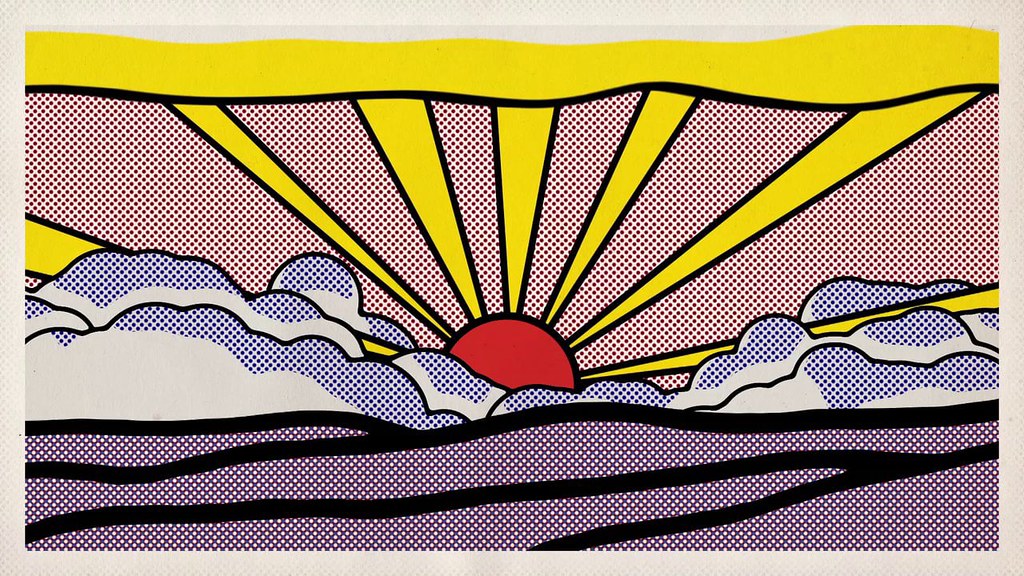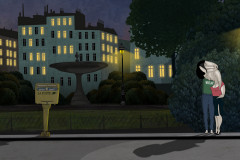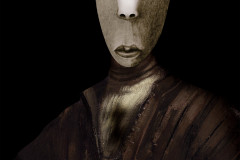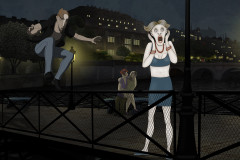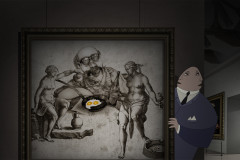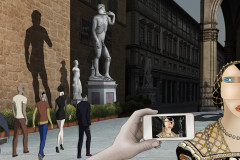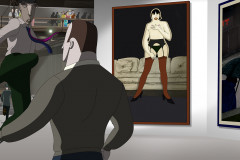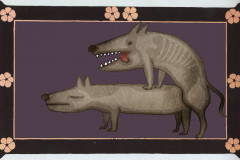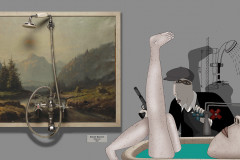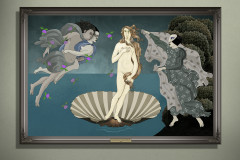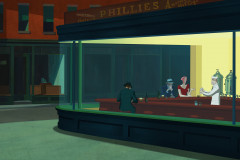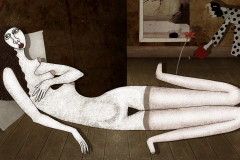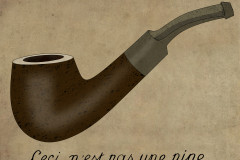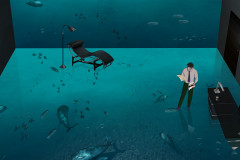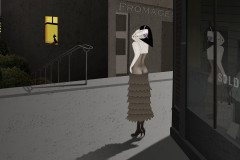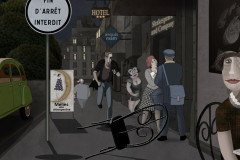Lichtenstein, Roy (1923-1997): Napfelkelte, 1965 (olaj, magna, vászon, 91 x 173 cm) Az amerikai pop-art klasszikus témák és komponálási mód iránt is vonzódó művésze tájképsorozatokat is alkotott a maga sajátos, képregényekre emlékeztető stílusában. A filmben a tokiói pop-art kiállítás előcsarnokában a padlóra van felfestve a Napfelkelte, a sugarak „vezetik be” a látogatót a kiállítás terébe.
Van a napfelkelténél romantikusabb és egyben elcsépeltebb tájképi téma a festészetben és a kommersz képalkotásban? (Talán a naplemente - de valószínűleg csak azért, mert akkor többen ébren vagyunk és többet tudunk fényképezni). Így hát a motívum kiválóan megfelel Lichtenstein céljainak, aki mindig a már ismerős újraalkotására törekedett. Végletekig leegyszerűsítve, a természetes látványtól nagyon is elrugaszkodva, a romantikus hangulatot, az átmenetek varázsát kiiktatva ábrázolja a témát. A napsugarak mechanikus szabályossággal, szimmetrikusan meghúzott fekete vonalai, a középre helyezett intenzív vörös napkorong tömör, szinte jelszerű átiratai a tájnak. Épp ezért intenzív a hatása is, szinte „beleég a szemünkbe”.
Lichtenstein, Roy (1923–1997): Sunrise, 1965 (oil, magna, canvas, 91 x 173 cm). The American pop art artist, known for his fascination with classical themes and compositional methods, also created landscape series in his distinctive, comic-inspired style. In the film, Sunrise appears painted on the floor in the entrance hall of the Tokyo pop art exhibition, with its rays seemingly guiding visitors into the exhibition space.
Is there a more romantic—and at the same time more clichéd—landscape theme in painting and commercial imagery than the sunrise? (Perhaps the sunset—but probably only because more of us are awake and able to take photos then.) The motif is a perfect fit for Lichtenstein’s aims, as he consistently sought to recreate what was already familiar. Radically simplified and stripped of any naturalistic detail, he renders the scene without romantic atmosphere or the magic of gradual transitions. The rays of the sun are depicted with mechanical precision, as symmetrical black lines; the intense red disk of the sun, centered in the image, becomes a compact, almost emblematic reinterpretation of the landscape. And precisely because of this formal reduction, the image leaves a strong impression—it almost seems to burn into our eyes.







